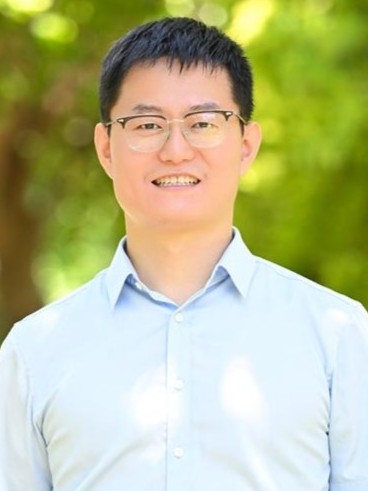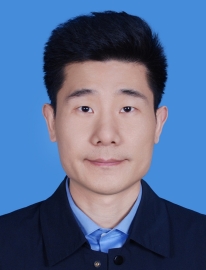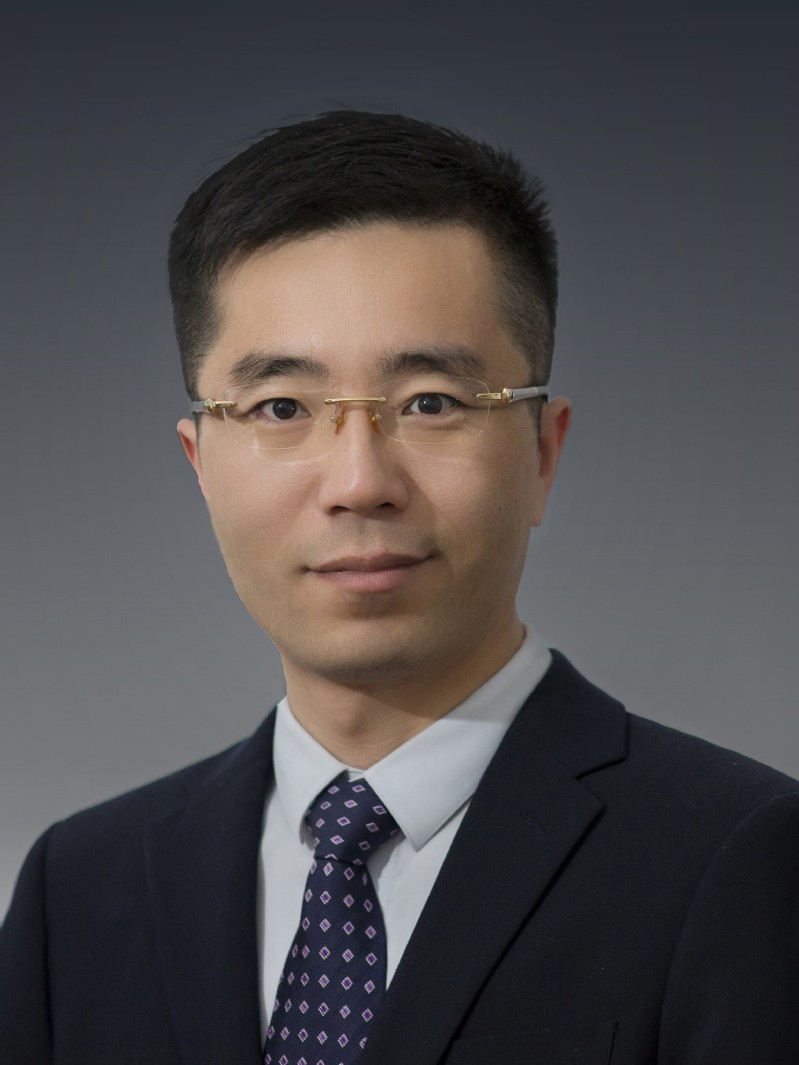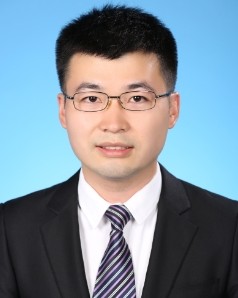
Biography: Cheng Yan is a tenured associate professor and a doctoral supervisor at the School of Aerospace Engineering, Xiamen University. He obtained both his bachelor's and doctoral degrees from Beihang University, studying under Academician Yin Zeyong. He has long been engaged in research on the design and optimization of key components of aero-engines. He has received honors such as the Young Elite Scientist Sponsorship Program by the China Association for Science and Technology and the High-Level Talent (Class B) of Fujian Province. He has published 20 SCI papers and 6 EI papers as the first author/corresponding author, holds 31 patents (authorized or pending) and 3 authorized software copyrights as the primary inventor, participated in the publication of 4 monographs, and delivered 6 invited reports. In the past 5 years, he has led multiple projects including basic research projects of the National Science and Technology Major Project, general/youth programs of the National Natural Science Foundation of China, and special funding/general projects of the China Postdoctoral Science Foundation. He serves as a dual-appointed expert and young visiting scholar at Taihang National Laboratory, a youth committee member of the Mechanical Design Branch of the Chinese Mechanical Engineering Society, and a guest editor of the journal Aerospace. He also acts as a reviewer for journals such as Chinese Journal of Aeronautics, Structural and Multidisciplinary Optimization, Propulsion and Power Research, and Energy.
Title: Topology Optimization of Aero-Engine Disk Components for Additive Manufacturing: A Structure–Property–Process Co-Design Approach
Abstract: Multi-axis additive manufacturing (AM) brings notable advantages to the fabrication of aero-engine disk-type rotary parts, such as the ability to form complex geometries, high material utilization, and improved production efficiency. However, the anisotropy induced by the AM process results in direction-dependent mechanical properties, which can adversely affect the structural strength and service reliability of printed components. To achieve synergistic optimization of structure, property, and process, this research proposed a topology optimization (TO) method tailored for multi-axis AM of engine disk components. First, an innovative constitutive model was established to represent the material behavior of multi-axis AM rotary parts under arbitrary build orientations, providing a theoretical basis for performance prediction and process optimization. Second, a Tsai-Hill failure criterion suitable for multi-axis AM rotary parts was derived to predict the anisotropic strength distribution under different build directions. On this basis, an integrated TO model incorporating anisotropic strength, structural stiffness, and build orientation was constructed, along with a sensitivity analysis of the objective and constraints. Finally, the proposed method was validated through two typical aero-engine components: a compressor disk and a rear baffle disk. The results demonstrated that the method effectively realized structure–property–process integrated design, offering a new technical pathway for high-performance AM engine disks.

Biography: Doctor Junhao Geng is a Professor and Doctoral Supervisor at the School of Mechanical Engineering, Northwestern Polytechnical University (NPU). He previously served as a Visiting Scholar at the University of Alberta, Canada. Currently, he holds the position of Director of the Industrial Augmented Intelligence Research Institute at NPU and serves as Deputy Director of the Shaanxi Provincial Engineering Research Center for Smart Factory Industrial Software. He maintains active memberships as a Senior Member of CMES, Professional Member of CCF, and Member of IEEE. Additionally, he contributes as a peer reviewer for several top-tier journals including IEEE TII, IJPR, IEEE TOC, and IEEE TVCG. His research focuses on digital and intelligent aerospace manufacturing processes for complex products (including aircraft, aero-engines, spacecraft, rail transit, and ships), industrial AR/AI and augmented intelligence, EWIS intelligent assembly and airworthiness certification, manufacturing LLMs and their applications, AR-based intelligent devices, and high-end industrial software systems. He has led over 10 national-level projects, alongside more than 20 industry-sponsored projects. His scholarly output includes over 100 publications in top journals (e.g., JMS, IEEE TII, CII, IJPR) and other authoritative publications, and recognition including three provincial Science and Technology Progress Awards and one National Teaching Achievement Award. A key accomplishment under his leadership is the development of CAPPFramework 5.0, a nationally renowned industrial software platform. Furthermore, he spearheaded the creation of first open industrial augmented intelligence platform-OpenIAI (www.openIAI.com). These systems have been widely adopted by nearly 100 manufacturers across aviation, aerospace, and other industries, significantly enhancing digital process design and management capabilities within large and medium-sized manufacturing enterprises.
Speech Title: Aviation EWIS Intelligent Connection Technology: From Human Intelligence to Augmented Intelligence
Abstract: Aviation EWIS (Electrical Wiring Interconnection System) serves as the neural network of aircraft and other aviation equipment, providing power supply signals and communication links for the entire system. The correctness and reliability of its connections directly impact flight safety. Due to the extremely complex connection topology of EWIS, current design and on-site installation processes rely almost entirely on manual labor, resulting in low efficiency, poor quality, high labor intensity, and numerous safety risks. Various artificial intelligence technologies cannot be directly applied to the connection process. To address this challenge, we propose an EWIS Augmented Intelligence Connection Technology that synergizes human intelligence with artificial intelligence. Leveraging human-computer interaction technologies such as augmented reality, virtual reality, and large language models as the foundation for human-machine understanding and collaboration, and integrating AI-enabled methods like computer vision and deep learning, the technology achieves: augmented intelligence design for EWIS connection, large-scale wire harness augmented intelligence laying, small-scale connector augmented intelligence insertion. This approach significantly improves the efficiency and quality consistency of EWIS connection design and execution, providing technical support to ensure flight safety of aviation equipment.

Biography: Dr. Long Li earned his B.Eng. in Energy and Power Engineering from Xi'an Jiaotong University (2010), M.Sc. in Mechanical Engineering from the University of Wyoming, USA (2012), and Ph.D. in Mechanical Engineering from The Hong Kong University of Science and Technology (2016). Currently a Young Investigator at Fudan University's Department of Aeronautics and Astronautics, he previously served as a Senior Engineer at the China Academy of Space Technology (CAST). His research focuses on spacecraft thermal control, multiphase flow regulation under variable gravity, and micro/nanoscale heat-mass transfer processes. He has published over 10 papers in leading journals including Physical Review Letters, Small, and International Journal of Heat and Mass Transfer. Notable achievements include resolving thermal management challenges for high-energy power modules in China's next-generation navigation satellites and developing an on-orbit microfluidic multiphase reactor platform to mitigate microgravity-induced flow separation and reaction kinetics deterioration.
Speech Title: Recent Advances in Spacecraft Thermal Management: From Embedded Microchannel Cooling Devices to Dissipative Heat Sinks
Abstract: This presentation outlines recent developments in thermal control strategies for aerospace applications, addressing distinct challenges across multiple mission scenarios. First, an embedded microchannel-based cooling system is introduced for managing high heat fluxes in advanced electronic devices. The design employs optimized flow distribution and enhanced heat transfer interfaces to maintain stable temperatures under extreme power densities. Then, a dissipative heat sink concept tailored for manned lunar rovers is presented. The system utilizes flash evaporation to reject heat efficiently in the lunar surface environment while minimizing mass and power consumption. Its performance under transient operational conditions is evaluated through numerical simulations. Experimental validation and reduced gravity considerations are also addressed. Together, these studies demonstrate tailored thermal management solutions that enhance performance, efficiency, and robustness in next-generation space missions.

Biography: Dr. Mingmin Zhu is currently a Tenure-Track Associate Professor at the School of Aeronautics and Astronautics, Shanghai Jiao Tong University (SJTU). He received his B.E. from Beihang University in 2011, and both M.S. and Ph.D. from Shanghai Jiao Tong University in 2013 and 2018, respectively. His research focuses on aerothermodynamics in aero-engine internal flows, high-efficiency compression system design for advanced hybrid electric propulsion, complex flow mechanisms in high-load compressors, and flow control for stability enhancement. He has led several national and provincial research projects, including general/youth programs of the National Natural Science Foundation of China (NSFC), the Initiative Postdocs Supporting Program, Shanghai “Double First-Class” Initiative Joint Innovation Program, and the Natural Science Foundation of Shanghai. Dr. Zhu has published extensively in leading journals such as Aerospace Science and Technology, Physics of Fluids, and Journal of Turbomachinery, among others. He has also authored a textbook on propulsion principles and design and a monograph on leakage flows in aero compressors. His achievements in flow control for aero engine compressors were honored with one Science and Technology Progress Award from the Chinese Society of Aeronautics and Astronautics.
Title: Research Advances on High-Efficiency Compression Systems for Future Hybrid Electric Propulsion Systems
Abstract: Hybrid electric propulsion systems represent a critical pathway for future green aviation power, serving as the most viable solution prior to the full maturation of all-electric and hydrogen-powered technologies. These systems must meet the stringent demands of aircraft platforms for high-efficiency propulsion and high-power extraction, posing significant technical challenges for the design of fan/compressor compression systems. Our research team has conducted studies on advanced airframe-propulsion integration architectures and high-performance core engine aerodynamic design tailored for hybrid electric propulsion systems. This work provides essential technical support—from the perspectives of internal and external flow mechanisms, advanced internal flow measurement techniques, and efficient multi-objective optimization design methods—for the development of future hybrid-electric fans/compressors.

Biography: Dr. Wanyou Yang is an associate professor and master's supervisor at the School of Aeronautics and Astronautics, University of Electronic Science and Technology of China (UESTC). He has previously served as a Visiting Scholar at the National University of Singapore and as a Postdoctoral Researcher at Tsinghua University, China. Dr. Yang is an active member of the CMES and regularly contributes as a peer reviewer for several prestigious journals, including Tribology International, Mechanism and Machine Theory, and Acta Mechanica. His research interests include aircraft design, intelligent robotics, industrial simulation software with AI, interface mechanics, and lubrication theory. He has led and contributed as a key researcher to over 10 national-level projects. With around 50 publications in top journals such as International Journal of Mechanical Sciences, Tribology International, International Journal of Solids and Structures, and Applied Thermal Engineering, he has made significant contributions to his field.
Title: An Efficient and General Adhesive Contact Model for Layered Materials
Abstract: Coatings or layers significantly influence adhesive contact behaviors, requiring a versatile, efficient, and accurate model to predict outcomes in emerging layered media, including single-layered, multi-layered, and functionally graded materials(FGMs). This study proposes a general adhesive contact model based on the Lennard-Jones(LJ) potential, Hamaker summation, and Derjaguin approximation for layered materials. The newly derived adhesive pressure accounts for adhesive interaction contributions from all molecules, making it applicable to inhomogeneous materials. The proposed model is validated for homogeneous, single-layered, multilayered media and FGMs. Comparisons with other adhesive contact models are made to evaluate the present model’s predictions regarding the effects of various material parameters on adhesive force. The results highlight the proposed model’s simplicity, accuracy, and high efficiency across abroad spectrum of Tabor parameters at the nanoscale. The proposed model can capture the contact approach, interaction force, surface pressure, deformation, and stress distribution during both the approach and detachment processes of contact bodies, demonstrating great potential for engineering applications in the design of adhesive-related devices.
© MEAE 2018-2025. All Rights Reserved | Contact Us meae_conf@163.com